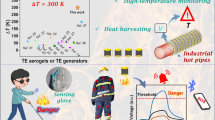Abstract
The present study experimentally investigates the shock wave attenuation performance of various sandwiched structures made up of different polymer foams (expanded polystyrene and polyurethane foam) with and without shear thickening fluid (STF). STF is a non-Newtonian fluid whose viscosity increases with increase in shear rate due to the formation of hydro clusters produced by the increased hydrodynamic forces acting between the interstitial spaces. Two layers of polymer foams have been considered for the shock protective material and the space between the layers is filled with shear thickening fluid. The shock wave is experimentally generated from a shock tube facility and is allowed to impinge on a target plate kept at 10 mm downstream to the shock tube end. It is seen that the protective material with polyurethane foam and shear thickening fluid (polyethylene glycol+silica nanoparticles) reduces the shock overpressure by nearly 35.51 %, whereas the protective material with only polyurethane foam (with the same thickness) reduces the shock overpressure by only 13.17 %. Similarly, the protective material with expanded polystyrene and shear thickening fluid reduces the shock overpressure by nearly 32.16 %, whereas the protective material with only expanded polystyrene (with the same thickness) reduces the shock overpressure by only 10.49 %. Hence, it is evident that the shear thickening fluid between the polymer foam layers greatly helps in shock wave attenuation.
Similar content being viewed by others
Abbreviations
- ACH :
-
Advance combat helmet
- bTBI :
-
Blast-induced traumatic brain injury
- CFD :
-
Computational flow dynamics
- PEG :
-
Polyethylene glycol
- STF :
-
Shear thickening fluid
- UD :
-
Unidirectional
- UHMWP :
-
Ultra-high molecular weight polyethylene
- P1 :
-
Pressure at driver section
- P2 :
-
Pressure at driven section
References
A. C. Courtney and M. W. Courtney, A thoracic mechanism of mild traumatic brain injury due to blast pressure waves, Med. Hypotheses, 72 (1) (2009) 76–83.
I. Cernak, Z. Wang, J. Jiang, X. Bian and J. Savic, Ultrastructural and functional characteristics of blast injury-induced neurotrauma, J. Trauma, 50 (4) (2001) 695–706.
H. L. Lew, J. H. Poole, S. Alvarez and W. Moore, Soldiers with occult traumatic brain injury, Amer J. Phys. Med. Rehab., 84 (2005) 393–398.
D. R. Mott, D. A. Schwer, T. R. Young, J. Levine, J. P. Dionne, A. Makris and G. Hubler, Blast-induced pressure yields beneath a military helmet, Proceedings of the 20th International Symposium on Military Aspects of Blast and Shock, Oslo, Norway (2008).
M. A. Abtew, F. Boussu and P. Bruniaux, Dynamic impact protective body armour: A comprehensive appraisal on panel engineering design and its prospective materials, Defence Technology, 17 (6) (2021) 2027–2049.
H. Sarvghad-Moghaddam, A. Rezaei, M. Ziejewski and G. Karami, CFD modeling of the underwash effect of military helmets as a possible mechanism for blast-induced traumatic brain injury, Computer Methods in Biomechanics and Biomedical Engineering, 20 (2017) 16–26.
W. C. Moss, M. J. King and E. G. Blackman, Skull flexure from blast waves, a mechanism for brain injury with implications for helmet design, Phys. Rev. Lett., 103 (10) (2009) 108702.
S. Bloodworth-Race, R. Critchley, R. Hazael, A. Peare and T. Temple, Testing the blast response of foam inserts for helmets, Heliyon, 7 (5) (2021) e06990.
S. Sharma, R. Makwana and L. Zhang, Evaluation of blast mitigation capability of advanced combat helmet by finite element modelling, 12th International LS-DYNA® Users Conference (2012) 1–12.
A. Kumar and V. Pathak, Shock wave mitigation using zig-zag structures and cylindrical obstructions, Defence Technology, 17 (6) (2021) 1840–1851.
R. G. Egres and J. W. Norman, The rheology and microstructure of acicular precipitated calcium carbonate colloidal suspensions through the shear thickening transition, Journal of Rheology, 49 (3) (2005) 719–746.
R. L. Hoffman, Discontinuous and dilatant viscosity behavior in concentrated suspensions, II. theory and experimental tests, J. Colloid Interface Sci., 46 (3) (1974) 491–506.
H. A. Barnes, Shear-thickening (dilatancy) in suspensions of nonaggregating solid particles dispersed in newtonian liquids, J. Rheol, 33 (1989) 329–366.
M. Karahan, A. Jabbar and N. Karahan, Ballistic impact behavior of the aramid and ultra-high molecular weight polyethylene composites, J. Reinf. Plast Compos, 34 (1) (2015) 37–48.
D. Zhang, Y. Sun, L. Chen, S. Zhang and N. Pan, Influence of fabric structure and thickness on the ballistic impact behavior of ultrahigh molecular weight polyethylene composite laminate, Mater. Des., 54 (2014) 315–322.
V. B. C. Tan, T. E. Tay and W. K. Teo, Strengthening fabric armour with silica colloidal suspensions, Int. J. Solids Struct., 42 (2005) 1561–1576.
D. V. Mishra, A. Mishra, A. Singh, V. Verma and G. Rajesh, Ballistic impact performance of UHMWP fabric impregnated with shear thickening fluid nanocomposite, Composite Structure, 281 (2022) 114991.
Y. S. Lee, E. D. Wetzel and N. J. Wagner, The ballistic impact characteristics of Kevlar® woven fabrics impregnated with a colloidal shear thickening fluid, Journal of Materials Science, 38 (13) (2003) 2825–2833.
A. Haris, H. P. Lee, T. E. Tay and V. B. C. Tan, Shear thickening fluid impregnated ballistic fabric composites for shock wave mitigation, Int. J. Impact Eng., 80 (2015) 143–151.
X. Wu, F. Zhong, Q. Yin and C. Huang, Dynamic response of shear thickening fluid under laser induced shock, Applied Physics Letters, 106 (7) (2015) 071903.
Acknowledgements
This research project is funded by the INSPIRE research grant (IFA-18-ENG-251) from the Department of Science and Technology (DST), India.
Author information
Authors and Affiliations
Corresponding author
Additional information
Arun Kumar R is working as an Assistant Professor at the Department of Mechanical Engineering, Indian Institute of Technology Jodhpur (IITJ), India. He received his Ph.D. from Indian Institute of Technology Madras (IITM), India. His research interests include shock wave reflections, blast wave attenuation, highspeed internal and external flows, experimental aerodynamics.
Rights and permissions
About this article
Cite this article
Singh, K., Raj, R., Rajagopal, A.K. et al. Shock wave attenuation using sandwiched structures made up of polymer foams and shear thickening fluid. J Mech Sci Technol 37, 1311–1316 (2023). https://doi.org/10.1007/s12206-023-0217-z
Received:
Revised:
Accepted:
Published:
Issue Date:
DOI: https://doi.org/10.1007/s12206-023-0217-z




